
Features by Diane Larner founder and editor of Bathroom Review & Kitchens Review.
Diane Larner launched both titles over 12 years ago and has been writing about the bathroom and kitchen interior design industry ever since, publishing regular features across the two sectors.
Thanks to hefty inflation hikes, 2023 was difficult for the hospitality industry. However, as the sector emerges (not without battle scars), good news awaits hoteliers; the latest predictions point to 2024 being the only post-COVID year to see occupancy rates surpass 2019 levels.*
Amidst this resurgence, there is a clear evolution in design within hospitality. Sustainability, smart technology integration, innovative concept rooms, and open-plan layouts are leading the way and shaping the future landscape of hotel interiors.
Water conservation remains a priority for hoteliers due to costs, but escalating droughts and heightened consumer awareness have added to the impetus for change. The convergence of water-saving initiatives with low-carbon design has become the new standard for brands seeking to craft compelling and credible narratives.
A recent industry report underscores the role of environmental concerns in consumer decision-making, with a staggering 84% expressing willingness to disengage from brands with poor eco-practices. In the hospitality sector, single-use plastic is emerging as a symbol of outdated practice. It contrasts starkly with forward-thinking hotel brands that are incorporating built-in accessories and water-saving features.
Architects and designers who select responsible brands with robust eco-credentials will ensure a streamlined process that aligns seamlessly with the march toward holistic sustainability solutions.
Yvonne Orgill, MD at the Unified Water Label Association, UWLA, agrees; “The Hospitality industry has an opportunity to take its environmental responsibilities seriously, embracing water-efficient bathroom products that carry the Unified Water Label. Hotels, spa’s and public washrooms also have a role to play in influencing the consumer by leading with these products and showing them how well they can perform.
“Embracing water and energy efficiency not only satisfies customer expectations but will prepare businesses for new government legislation, which is on the horizon, as the importance of sustainability and the circle economy increases.”
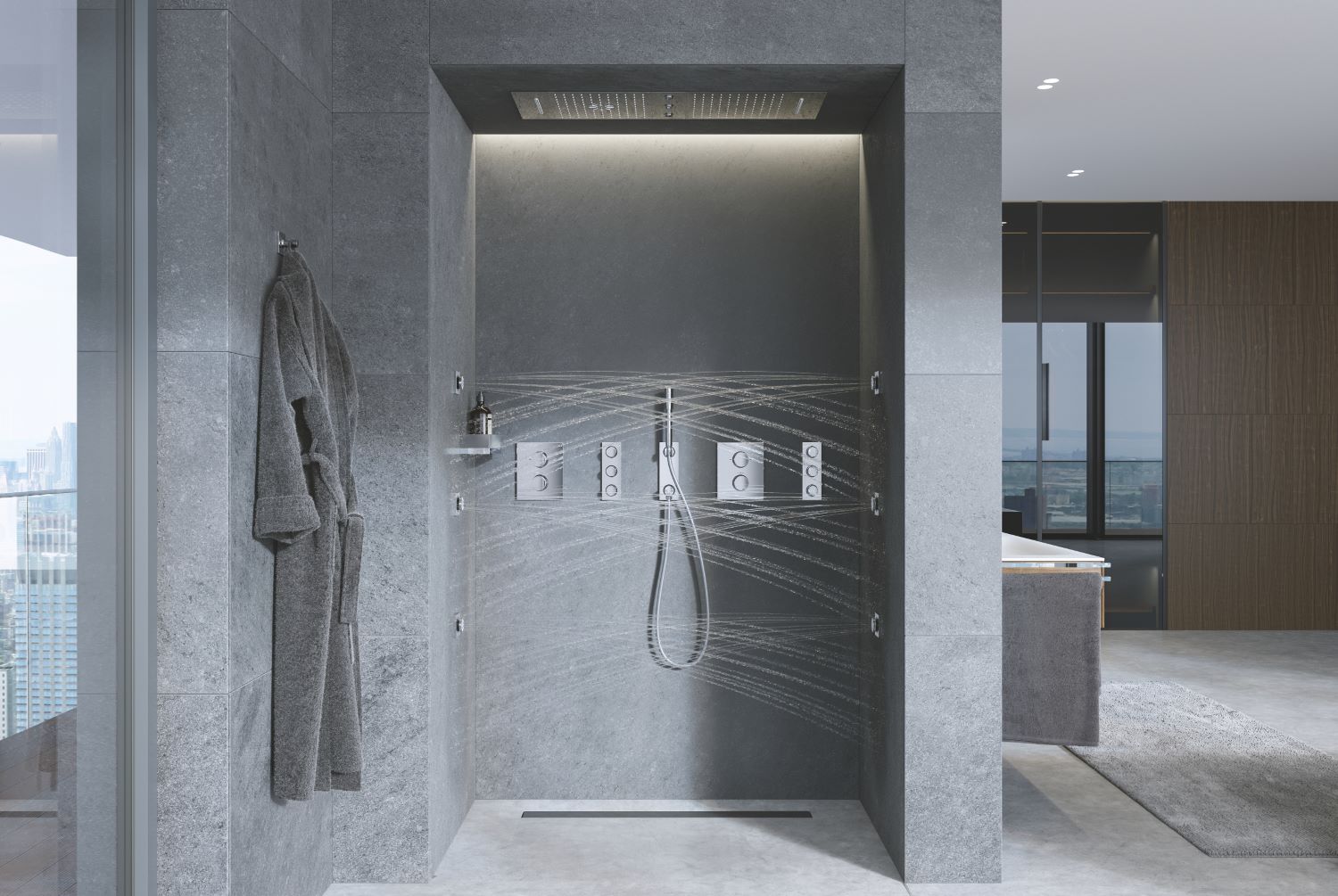
Grohe is one such company that is ahead of the curve in the sustainability arena, winning a raft of awards, including the recent BMA Sustainability Award. The Grohe Rainshower Aqua models not only offer customisation options – making them ideal choices for hospitality settings – but also include water-saving Grohe EcoJoy technology that aligns with the industry’s growing focus on sustainability, allowing establishments to provide premium amenities while minimising environmental impact.
Ronke Ugbaja, leader of product management at Lixil Emena & Grohe UK, explains, “The trend towards integrating smart, water-saving products in hospitality spaces reflects a broader cultural shift towards wellness and sustainability. As technology advances and becomes more accessible, consumers increasingly seek products that not only enhance convenience but also promote environmental responsibility.”
Clean & fresh

The rise in smart tech heralds new innovation as the automated bathroom market stands poised for growth, with projections indicating we can expect impressive Compound Annual Growth Rate (CAGR) increases from 2023 to 2030.** Technology dovetails with wellness and, as such, should be discreet and intuitive with easy-to-use features that do not overwhelm the user or ask for engagement from patrons who are striving to relax and take a break from digital demands.
Shower-toilets are one example of the smart tech we can expect to see in contemporary bathrooms. The Duravit SensoWash® product range comprises a range of different models for varied requirements. Reassuringly hygienic, Duravit’s Rimless® technology and the highly effective antibacterial HygieneGlaze ceramic glaze further ensure optimum hygiene. After just six hours, approx. 90% of bacteria (e.g. coli bacteria) are eliminated, with approx. 99.9% eliminated after 24 hours.
Martin Carroll, MD of Duravit UK, notes the shifting landscape as consumers increasingly prioritise wellness and cleanliness: “Once only found in high-end hotels, shower-toilets are now becoming a standard feature in contemporary bathrooms; the need for greater hygiene in recent years has, in part, led to this higher demand. “
Duravit’s latest SensoWash® D-Neo compact shower-toilet, where all the technology is discreetly integrated into the ceramic body, enables the manufacturer to expand into the lower price segment of the market. The clear-cut, no-fuss design harmonises effortlessly with any room aesthetic and works with all the Duravit design series.
Always inclusive
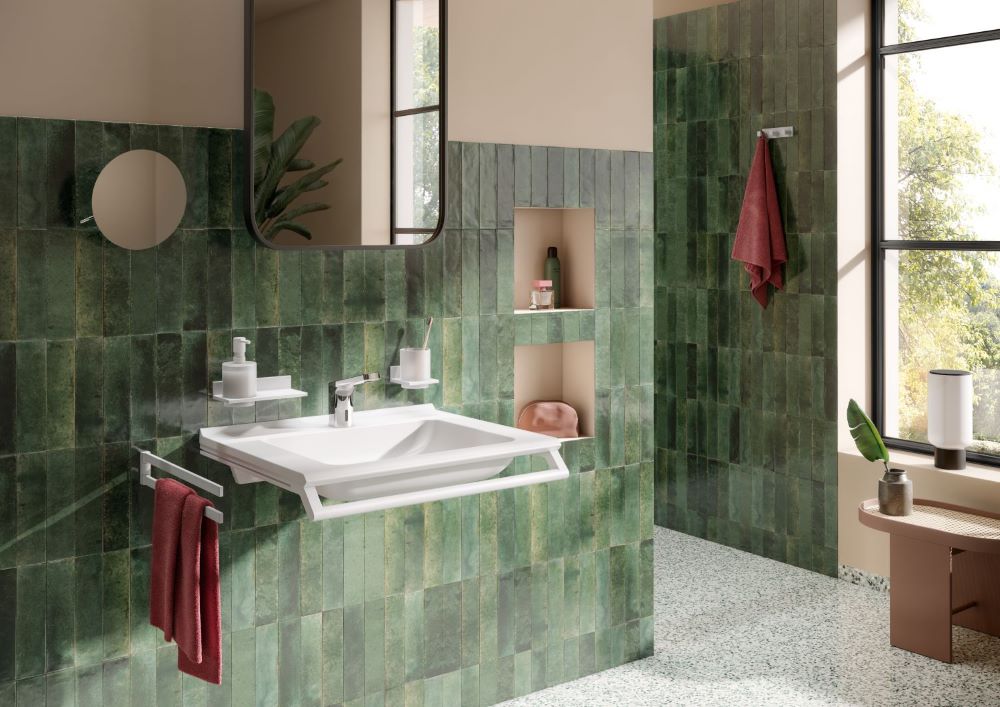
Thoughtful design is emerging as a key consideration as we embark on a new era of inclusive hospitality. The concept of creating accessible spaces has evolved beyond the notion of dedicating specific rooms exclusively for guests with diverse needs. By embedding accessibility features into the bathroom environment, designers create spaces that cater to everyone, regardless of their physical abilities or limitations. This type of innovative design champions discreet accessibility with a winning aesthetic that ensures a long-term, cost-effective solution for hoteliers since no room needs to be set aside solely for accessible use.
Stephen Maley, UK sales director for Hewi agrees, “Contemporary hotel concepts are not only characterised by good design and a distinctive ambience, but also cater to the different needs of guests. The Universal Design concept is, therefore, groundbreaking for the furnishing of hotels. It creates the conditions for guests to feel comfortable and be supported in their independence.”

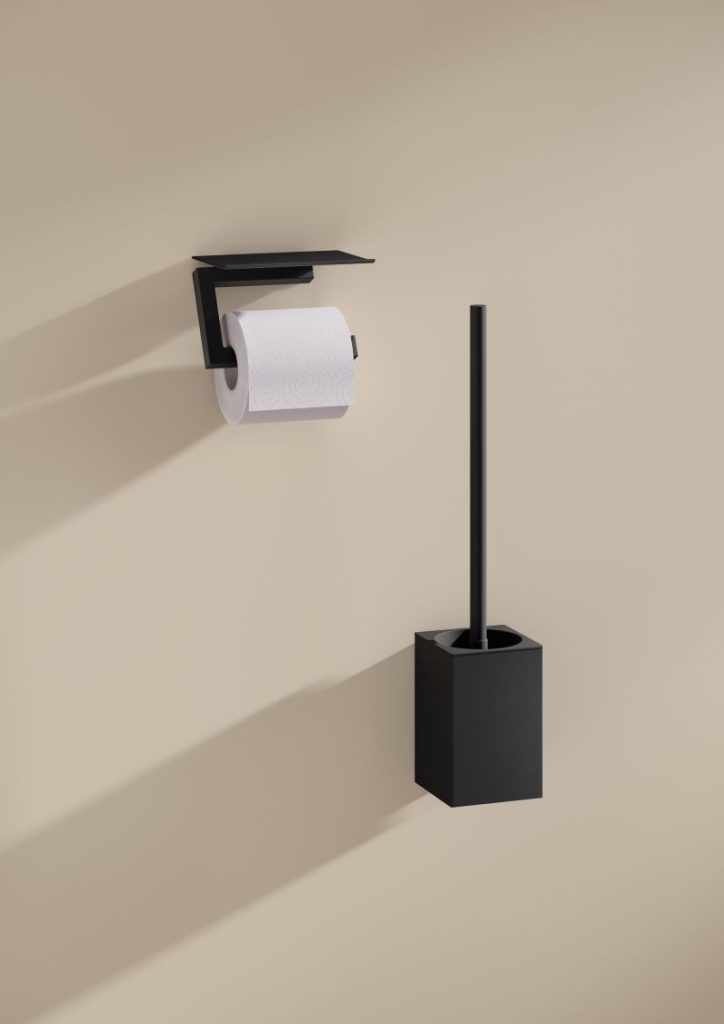
A cohesive approach to accessibility can be achieved by including matching accessories. Hewi’s S 900 Q design variant (pictured top and above) was launched in July 2023 and complements the classic System 900 for accessible bathrooms. S 900 Q accessories are versatile additions offering towel rails, toilet roll holders, toilet brush units, and other products. As is characteristic of HEWI, all components have been developed with the greatest care and thoughtful consideration down to the last detail. They are also designed to combine with each other.
Open & honest
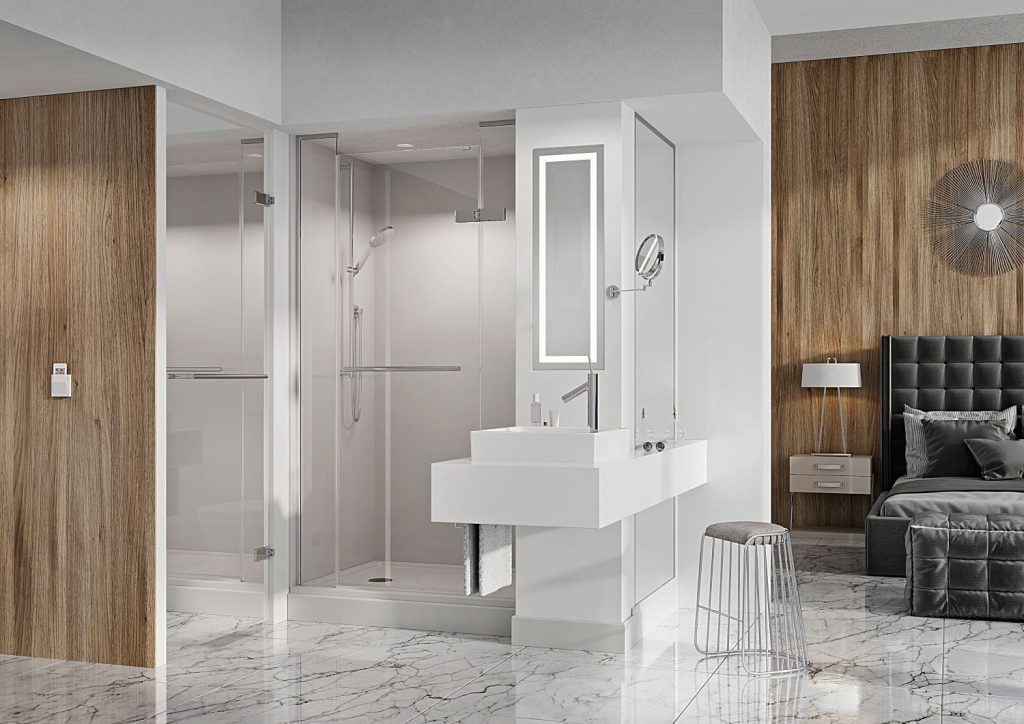
Merging spaces continues to be a popular trend this year. Connecting bathroom and bedroom areas gives the illusion of space and represents an ideal solution if room proportions are minimal. Open-plan bathrooms are arguably more hygienic and deliver a spa-like aesthetic that is hard to resist.
Chief executive office at Roman, David Osborne explains, “Many hotels are keen to offer an open living space which now includes the bathroom. Hotel brands have grown exponentially over recent years as the main groups strive to identify specialist channels and audiences.
“Open rooms maximise space – and make a smaller space seem bigger. Privacy is sacrificed for optimum living space. The removal of bathroom walls also allows easy cleaning, maintenance and refurbishment. This is a global trend that we have seen emerging over the last decade.”
Fanciful favourites
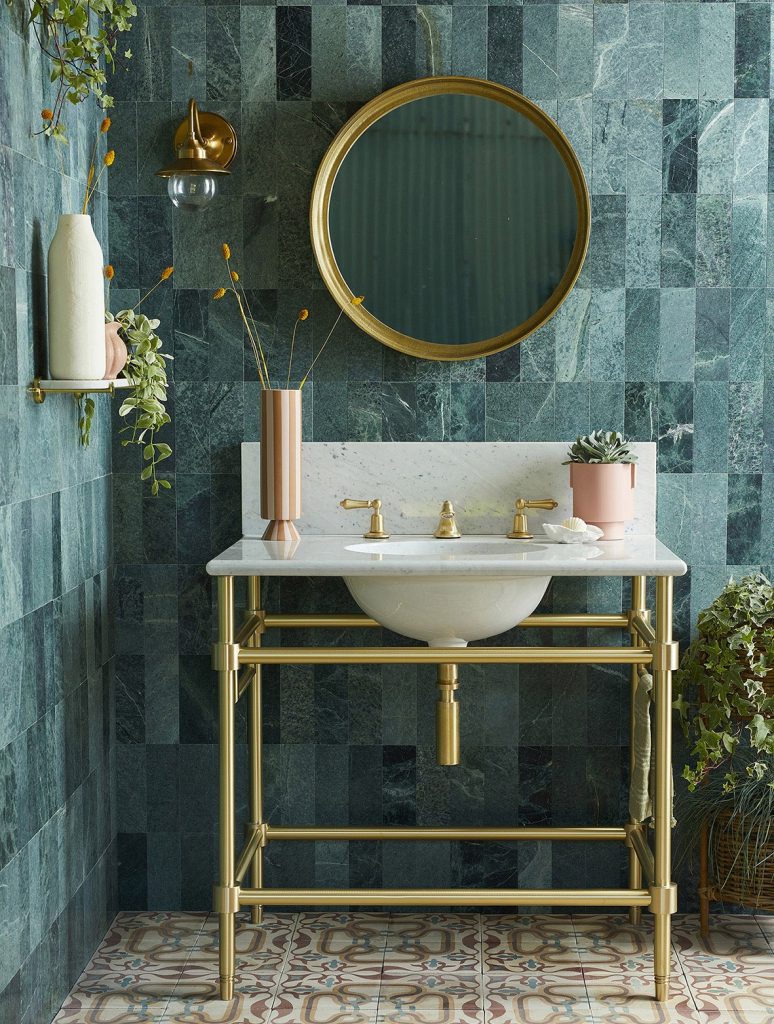
The rise in concept hotels sees a departure from cookie-cutter design and ushers in a welcome indulgence in design creativity. Whether opting for a jungle, beach or castle, concept hotels deliver extravagant, Instagramable moments for guests. The key to a successful design is incorporating the theme into every aspect of the build. Surface and lighting choices help coordinate the bathroom with the overall design.
Hyperion works closely with designers, specifiers and architects and says its team is available to offer expert advice, technical know-how and in-depth product knowledge on solid and engineered wood flooring, tiles and LVT. The family-run, independent online tiles and flooring specialist has a range of products to inspire designers.
LED strip lighting from Knightsbridge is also a tremendously versatile option for day-to-day use or mood creation, from subtle lighting to feature pieces to budget or specialist. Single-colour LED strips have always been popular, as when combined with dedicated drivers, controllers and profiles, they offer a quick solution to most installations.
“There has been a marked increase in interest in the demand for colour-changing RGBW (Red, Green, Blue, White) options. A development in colour-changing RGBW LED strips is the incorporation of smart technology, which, thanks to app-based controls, manages lighting from our personal devices,” says Molly Ho, product manager at Knightsbridge.
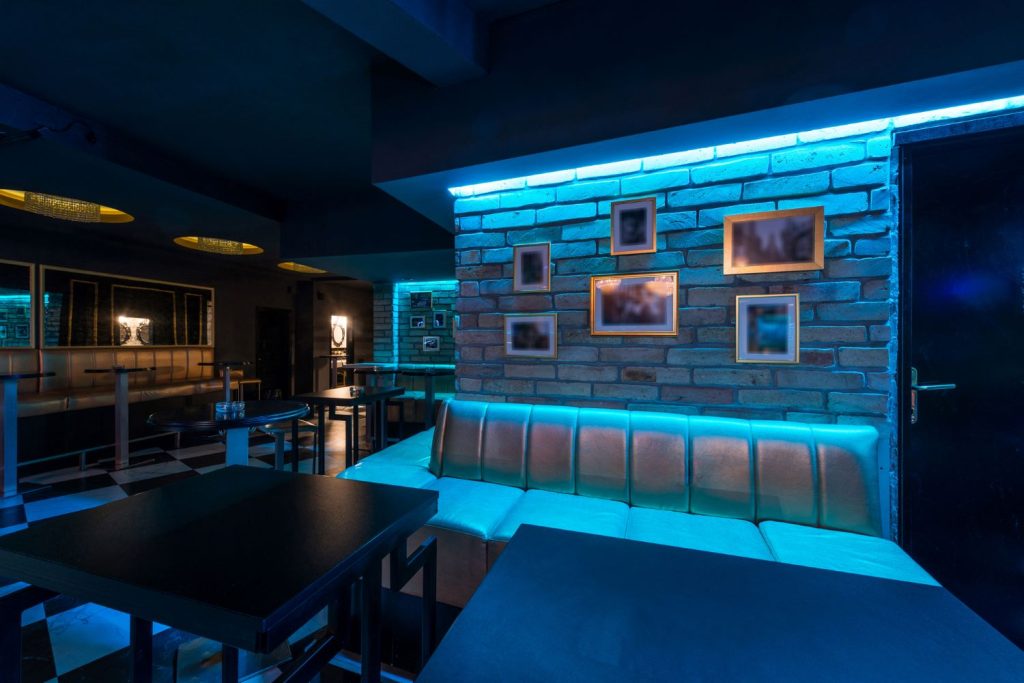

END
You can see more on our site if you enjoyed this Bathroom Review feature. Alternatively, if Kitchens are your thing, please visit our sister site, Kitchens Review

